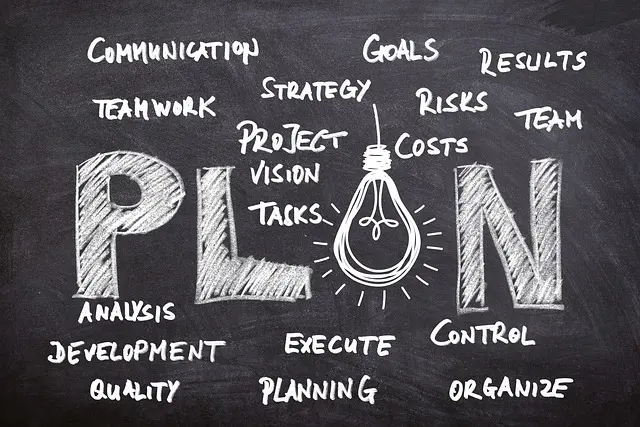
Girls’ interest in STEM fields
Girls’ interest in STEM fields has been a topic of significant discussion and investigation in recent years. Research has shown that, on average, girls often express less interest in science, technology, engineering, and mathematics (STEM) subjects compared to their male counterparts. However, it is essential to note that these differences in interest do not reflect girls’ capabilities or potential in these fields.
One of the primary factors influencing girls’ interest in STEM is the effect of stereotypes and gender biases. Society often reinforces the notion that these fields are more suited for boys, leading girls to feel discouraged or unwelcome. These stereotypes can shape girls’ perceptions of their abilities, negatively impacting their confidence and motivation to pursue STEM disciplines. Consequently, addressing and challenging these stereotypes is crucial in fostering girls’ interest in STEM and creating a more inclusive environment for all.
Factors influencing girls’ interest in STEM
Stereotypes and societal expectations play a significant role in influencing girls’ interest in STEM fields. From an early age, girls are bombarded with messages that associate STEM with masculinity, making them feel that these fields are not meant for them. The lack of representation of women in STEM careers further reinforces this belief. Girls often grow up believing that they are not as capable as boys in math and science, which in turn affects their interest in pursuing STEM subjects. These deeply ingrained stereotypes and gender biases hinder girls’ confidence and contribute to the underrepresentation of women in STEM industries.
Another factor that influences girls’ interest in STEM is the educational environment they experience. Often, girls are discouraged from pursuing STEM subjects due to biased treatment in classrooms, lack of encouragement, and limited resources. The absence of female role models in the STEM fields exacerbates these challenges, as girls struggle to envision themselves in such careers. Additionally, the perception of limited career opportunities for women in STEM may deter girls from pursuing these fields. It is crucial to create an inclusive educational environment that recognizes and encourages girls’ potential in STEM, providing them with the necessary support and resources to thrive.
Stereotypes and gender biases in STEM
Stereotypes and gender biases continue to persist in the field of STEM, creating barriers for girls’ interest and participation. Despite the progress made in addressing these issues, the gender gap remains prominent in fields such as engineering and computer science. Stereotypes portray these fields as being more suitable for males, perpetuating the belief that girls lack the necessary skills or aptitude. Furthermore, gender biases can affect the way girls are treated or perceived in STEM environments, leading to feelings of exclusion or discouragement.
These stereotypes and biases can have a detrimental impact on girls’ confidence and motivation to pursue STEM subjects. When girls are exposed to societal expectations that discourage their involvement in technical or scientific fields, they may internalize these messages and hesitate to explore their interests. Research has shown that girls tend to underestimate their abilities in STEM due to societal pressures and preconceived notions. This not only limits their own potential, but also contributes to the underrepresentation of women in STEM professions. Overcoming stereotypes and biases is crucial in creating a more inclusive and diverse STEM workforce where girls are encouraged to embrace their talents and pursue their passions.
Efforts to increase girls’ interest in STEM
Efforts to increase girls’ interest in STEM have become a crucial focus in recent years. It is widely recognized that encouraging girls to pursue fields in science, technology, engineering, and mathematics is not only beneficial to their own personal growth and career opportunities, but also to the wider society. Numerous initiatives and programs have been implemented to tackle the gender gap in STEM and inspire young girls to explore these fields.
One key aspect of these efforts is the promotion of positive role models and showcasing successful women in STEM. By highlighting female scientists, engineers, and mathematicians who have made groundbreaking contributions, young girls can see that there is a place for them in these fields. Additionally, providing mentorship programs and opportunities for girls to interact with women who are already established in STEM careers can greatly impact their confidence and aspirations. These efforts aim to combat the notion that STEM is a male-dominated area and continue to encourage girls to pursue their interests in these fields.
The impact of early education on girls’ interest in STEM
Early education plays a crucial role in shaping girls’ interest in STEM fields. Research has shown that exposure to STEM subjects and activities at a young age can significantly impact girls’ attitudes and beliefs about their abilities in these areas. When girls are introduced to science, technology, engineering, and mathematics early on, they develop confidence in their abilities and are more likely to pursue further study and careers in these fields.
One of the key benefits of early education in STEM is that it helps to break down gender stereotypes and biases. By providing girls with equal opportunities to engage in hands-on experiments, problem-solving activities, and critical thinking exercises, early education creates an inclusive learning environment where girls feel empowered to explore and excel in STEM subjects. Moreover, when girls interact with peers and teachers who challenge and support their curiosity, they develop a positive perception of their abilities and potential in STEM, leading to increased interest and motivation to pursue these fields in the future.
Parental influence on girls’ interest in STEM
Research has shown that parental influence plays a significant role in shaping girls’ interest in STEM fields. Parents’ attitudes and beliefs about gender roles and academic abilities can unknowingly impact their daughters’ perceptions of their own abilities in STEM. For example, if parents hold stereotypes that girls are not naturally inclined or capable in subjects like math and science, their daughters may internalize these beliefs and may be less likely to show interest or pursue STEM-related activities. On the other hand, parents who actively encourage their daughters’ curiosity, provide opportunities for exploration in STEM fields, and promote a growth mindset can positively influence their daughters’ interest and confidence in pursuing STEM subjects.
Furthermore, the level of parental involvement in their daughters’ STEM education also plays a crucial role. Parents who show a genuine interest in their daughters’ academic progress and provide support and resources for STEM-related activities create an environment that fosters interest and motivation. This involvement can range from helping with homework, discussing STEM-related topics at home, enrolling their daughters in extracurricular STEM programs, or even introducing them to female role models who have succeeded in STEM fields. By demonstrating a belief in their daughters’ capabilities and providing the necessary support, parents can nurture their girls’ interest in STEM and lay a strong foundation for their future success in these fields.
The role of teachers in fostering girls’ interest in STEM
Teachers play a crucial role in fostering girls’ interest in STEM fields. They have the responsibility to create a supportive and inclusive classroom environment that encourages all students, regardless of gender, to explore and excel in these fields. By providing equal opportunities for girls to engage in hands-on experiments, problem-solving activities, and team projects, teachers can help break down the gender divide in STEM education.
Moreover, teachers can challenge stereotypes and gender biases related to STEM subjects by promoting a growth mindset and emphasizing the importance of effort and perseverance. By focusing on the process rather than the outcome, teachers can help girls develop confidence in their abilities and overcome any self-doubt they may have towards STEM. Additionally, teachers can incorporate real-life examples and highlight the contributions of female scientists, engineers, and mathematicians in their lessons, thus exposing girls to inspiring role models in STEM fields.
Girls’ perception of their abilities in STEM fields
Girls’ perception of their abilities in STEM fields plays a crucial role in shaping their interest and pursuit of these disciplines. Research indicates that young girls often view themselves as less competent or capable in STEM subjects compared to their male counterparts. This perception can be influenced by a variety of factors, including societal stereotypes, cultural beliefs, and limited exposure to female role models in STEM fields.
One key factor in shaping girls’ perception of their abilities in STEM is the presence of gender biases and stereotypes. From an early age, girls may internalize societal messages that suggest they are naturally less inclined or competent in math and science. These stereotypes can create a self-perception that hinders girls’ confidence and willingness to engage in STEM activities. Additionally, certain cultural beliefs, such as the notion that STEM fields are better suited for boys, can further contribute to girls doubting their abilities in these areas. Consequently, it is important to address and challenge these harmful biases to foster a positive and inclusive environment that empowers girls to believe in their capacity to succeed in STEM.
The importance of mentors in encouraging girls’ interest in STEM
Mentors play a vital role in encouraging girls’ interest in STEM fields. By providing guidance and support, mentors can inspire and empower girls to pursue their interests and excel in STEM subjects.
One important aspect of mentorship is the opportunity for girls to see someone who looks like them succeeding in STEM. Representation matters, and when young girls have mentors who are women working in STEM fields, it can help to break down stereotypes and provide them with role models to look up to. Mentors can share their own experiences, discuss challenges they faced, and help girls navigate any barriers or biases they may encounter along their STEM journey. This guidance can boost girls’ confidence and encourage them to pursue their passions without feeling limited by preconceived notions of what is traditionally deemed a “male-dominated” field.
The future of girls in STEM fields
Over the past few decades, we have witnessed a significant increase in efforts to encourage girls to pursue STEM (Science, Technology, Engineering, and Mathematics) fields. This shift is driven by the recognition of the untapped potential that girls possess and the need for more diverse voices in these male-dominated industries. As a result, the future of girls in STEM fields looks promising, with opportunities for growth and advancement becoming more accessible.
One key factor in shaping the future of girls in STEM fields is the continuous effort to challenge and break down the stereotypes and gender biases associated with these disciplines. By encouraging girls to explore their interests and talents in STEM from an early age, we can empower them to challenge societal expectations and pursue their passions without limitations. Additionally, supporting girls’ participation in STEM-related extracurricular activities, competitions, and mentorship programs can provide them with the necessary guidance and inspiration to navigate their educational and career paths in these fields.












